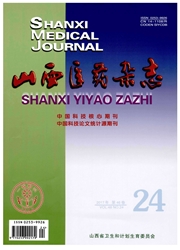

 中文摘要:
中文摘要:
目的对持续昏迷的重症颅脑外伤患者进行床旁脑电图监测,与健康对照人脑电图进行对比,探讨该患者群意识恢复的可能,以及床旁脑电监测评价预后的准确率。方法选择神经外科重症监护室中长期昏迷的重症颅脑外伤患者[格拉斯哥昏迷测量评分(GCS)〈8]12例,利用床边中央神经监护系统记录连续脑电图,通过运动意向对指令一服从(要求其想像右手和脚趾按照指令进行运动的任务)进行检测,对比其脑电图与健康、有清醒意识的12名对照组的相似性。结果12例患者有4例(16%)尽管在行为上完全无应答,但其重复可信地对2个不同指令产生适当的EEG反应;EEG按Young分级标准进行分级,1~2级预后较好,3~6级预后差,级别越高预后越差。结论床旁脑电图监测可能辨别在行为学上看来似乎完全处于植物状态,但仍可能具有残余认知功能和自觉意识的患者,这部分患者有意识恢复的可能。
 英文摘要:
英文摘要:
Objective To observe the relationship between EEG classification and prognostic prediction in patients with severe brain trauma, and to investigate the predictive value and accuracy of EEG's classification. Methods EEG's classification and Glasgow coma scale (GCS) were dynamically recorded at the bedside with severe brain trauma, 12 patients alone with GCS〈8 were admitted. Patients completed the task in which they were required to imagine movements of their right-hand and toes according to command. We analyzed the command-specific EEG response of each patient for robust evidence of appropriate, consistent, and statistically reliable markers of motor imagery, similar to those noted in healthy, conscious control. The predictability of outcome was calculated using discriminate analysis. Results The EEG of 12 patients in severe brain trauma was always markedly abnormal. The morbility of Young scale 1- 2 level is 16.75 %, and that of 3-6 level is 100 %. Conclusion The dynamic observation of EEG classification and EEG reactivity are the determinant factors for prognosis.
 同期刊论文项目
同期刊论文项目
 同项目期刊论文
同项目期刊论文
 期刊信息
期刊信息
